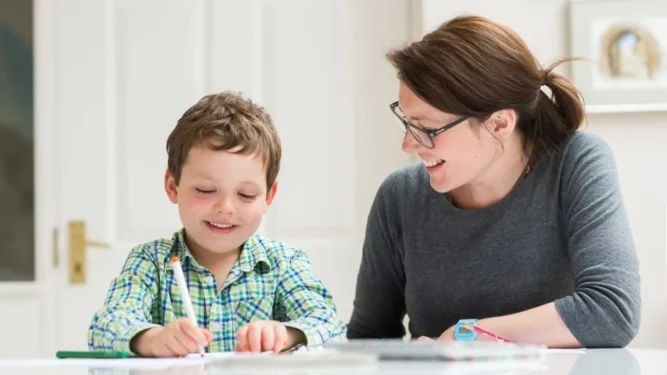What is dyslexia?
It is estimated that at least 10% of people in the UK have dyslexia, so there’s a high chance that there’s a child in your class who has the condition. So what is it – and more importantly, what can we do to support students with dyslexia?
Dyslexia is “a learning difficulty that primarily affects the skills involved in accurate and fluent word reading and spelling” (British Dyslexia Association). Dyslexia is a spectrum so people can be affected in different ways and to varying degrees.
What might a child with dyslexia find difficult?
It is important to stress that every child with dyslexia is different, so we shouldn’t assume abilities or difficulties. A general understanding is that it makes reading and writing more difficult. Whilst this is often true, dyslexia can impact other areas too. Children with dyslexia might also struggle with handwriting, telling the time, and staying organised. They might appear distracted in class, or get into trouble in class for trying to avoid doing written work. Their written ability often does not match up to their oral presentation.
How can we help a child with dyslexia in the classroom?
Do ensure that the child is getting proper support. The SENDCO should be involved, and other agencies (such as a support officer from a local hub) may offer support. Dyslexia is a Specific Learning Difficulty (SLD) and as such the SEND Code of Practice makes it clear that schools must provide support for students, whether they have an official diagnosis or not. If possible, talk to their parent or carer, or the young person themselves. What do they find particularly difficult?
Some practical adjustments in the classroom include:
1. Keep presentations clear
It can be tempting to add lots of pretty colours and graphics to powerpoint presentations. Resist. They need to be visually clear and contain limited information. Some students find certain colours particularly helpful/harmful so ask them (discreetly) what you can do to help.
2. Limit writing
Students with dyslexia often find writing difficult and exhausting. Can you give them handouts instead? Limit writing where possible. Invite them to use highlighters to process key information. And test knowledge and understanding verbally, as well as through written responses.
In the last decade or so, a quick solution for students with dyslexia was for schools to offer them laptops. The thinking was that if they found writing by hand difficult (and then couldn’t read their own writing) modern technology could help. Whilst laptops can help some students, they should not be handed out without consideration. For many students with dyslexia, mental processing difficulties remain even when using a laptop. Every student is different: talk to them!
3. Don’t focus endlessly on neatness.
Children with dyslexia will often find it difficult to write neatly on lines and to underline their work afterwards. In addition to the visual processing difficulties, children with a dyslexia profile can have poor fine motor skills. Show them kindness, and don’t fixate on work being neat.
4. Introduce new vocabulary slowly and carefully
For students who find reading and writing difficult, it is tiring trying to keep up with new words. Introduce vocabulary slowly. Give students ample time to write the word down (and help them to check spelling) or even better, give them a slip of paper with the key words already typed up. Then reinforce the new vocabulary the following lesson. And the lesson after that.
5. The fatigue is real
Imagine you gave up French in Year 9. And that was 20 years ago. But now you’re at a dinner party in Paris exclusively attended by Francophones. How does it feel? You might just about make it through the first course, but it is exhausting. You will be expending huge amounts trying to keep up. This is how it can be for a child in the classroom with dyslexia. Give them breaks (literal and metaphorical) where you can.
6. And how can we celebrate a child with dyslexia in the classroom?
Students with dyslexia think in different ways, and can be creative and entrepreneurial. There has been a growing trend in recent years to shout about dyslexia as a ‘superpower’, whilst listing famous dyslexic people who have overcome early difficulties to thrive in their chosen careers. However, dyslexia advocacy groups (e.g. the Dyslexia Association of Ireland) advise against emphasising this ‘superpower’ status too much, as it can add pressure to students who are already overwhelmed. Instead, celebrate the small wins for your students. Help them to share answers out loud. Congratulate them on writing a paragraph (even if the student next to them wrote an essay). And continue to ask them what adaptions you can introduce to help them.
Susannah (MSt, Oxon) qualified as a teacher in 2008. She has spent a large portion of her career working with students who find mainstream education difficult, including teaching students with Autism, Dyspraxia and Dyslexia. She has undertaken extra training in Dyslexia and Phonics.
